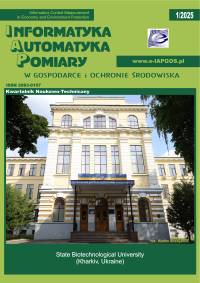COMPARISON OF THE SELECTED MOTION INTERPOLATION METHODS
Maria Skublewska-Paszkowska
maria.paszkowska@pollub.plPolitechnika Lubelska, Wydział Elektrotechniki i Informatyki (Poland)
Jakub Smołka
Politechnika Lubelska, Wydział Elektrotechniki i Informatyki (Poland)
Abstract
Interpolation is one of key aspects of computer animation. The selection of the proper interpolation method influences motion of animated objects. The paper presents selected interpolation methods and compares them with respect to computation time and accuracy. The three algorithms that were analyzed are: Catmull-Rom Spline, modified Catmull-Rom Spline and Blended Parabolas method. Numerical experiments were performed using a program written in C++ language.
Keywords:
interpolation methods, Hermitte, Catmull-Rom, Blended ParabolasReferences
Barger R.: Trajectory fitting in Function Space With Application to Analytic modeling of Surfaces, NASA, Technical Paper 3232, 1992.
Google Scholar
Eckel B.: Thinking in C++, Helion 2002.
Google Scholar
Engeln-Mullges G., Uhlig F.: Numerical Algorithms with C, Springer 1996.
DOI: https://doi.org/10.1007/978-3-642-61074-5
Google Scholar
Parent R.: Computer Animation: Algorithms & Techniques, Elsevier 2008.
Google Scholar
Rogers D., Adams J.: Mathematical Elements for Computer Graphics, McGraw-Hill, 1990.
Google Scholar
Rovenski V.: Geometry of Curves ans Surfaces with Maple, BirkHauser, Boston, 2000.
DOI: https://doi.org/10.1007/978-1-4612-2128-9
Google Scholar
Salomon D.: Computer Graphics and Geometric Modeling, Springer-Verlag New York, 1999.
DOI: https://doi.org/10.1007/978-1-4612-1504-2
Google Scholar
Skublewska-Paszkowska M., Łukasik E., Smołka J.: Analysis of motion interpolation methods, Shatsk Lakes, Ukraine, July 2-6, 2012, in press.
Google Scholar
Yamane K.: Simulating and Generatins Motions of Human Figures, Springer Tracts in Advanced Robotics 9, Springer-Verlag 2004.
Google Scholar
Authors
Maria Skublewska-Paszkowskamaria.paszkowska@pollub.pl
Politechnika Lubelska, Wydział Elektrotechniki i Informatyki Poland
Authors
Jakub SmołkaPolitechnika Lubelska, Wydział Elektrotechniki i Informatyki Poland
Statistics
Abstract views: 210PDF downloads: 246
License

This work is licensed under a Creative Commons Attribution-ShareAlike 4.0 International License.
Most read articles by the same author(s)
- Paweł Grzmil , Maria Skublewska-Paszkowska, Edyta Łukasik, Jakub Smołka, PERFORMANCE ANALYSIS OF NATIVE AND CROSS-PLATFORM MOBILE APPLICATIONS , Informatyka, Automatyka, Pomiary w Gospodarce i Ochronie Środowiska: Vol. 7 No. 2 (2017)
- Kamil Gut, Maria Skublewska-Paszkowska, Edyta Łukasik, Jakub Smołka, COMPARISON OF PROGRAMMING LANGUAGES ON THE IOS PLATFORM IN TERMS OF PERFORMANCE , Informatyka, Automatyka, Pomiary w Gospodarce i Ochronie Środowiska: Vol. 7 No. 3 (2017)
- Piotr Pańczyk, Jakub Smołka, SMART HOME IMPLEMENTATION COMPARISON ON DIFFERENT HARDWARE PLATFORMS , Informatyka, Automatyka, Pomiary w Gospodarce i Ochronie Środowiska: Vol. 7 No. 2 (2017)
- Bartosz Wijatkowski, Jakub Smołka, Maciej Celiński, INFLUENCE OF A PLATFORM GAME CONTROL METHOD ON A PLAYER’S EFFECTIVENESS , Informatyka, Automatyka, Pomiary w Gospodarce i Ochronie Środowiska: Vol. 11 No. 3 (2021)
- Michał Oseńko, Jakub Smołka, Maria Skublewska-Paszkowska, Edyta Łukasik, A METHOD FOR VISUALIZATION OF 3D MOTION DATA USING A MOBILE DEVICE , Informatyka, Automatyka, Pomiary w Gospodarce i Ochronie Środowiska: Vol. 7 No. 3 (2017)
- Dominika Hodun, Maria Skublewska-Paszkowska, OPTIMISATION ANALYSIS OF TRANSACT-SQL QUERIES BASED ON INDEXES , Informatyka, Automatyka, Pomiary w Gospodarce i Ochronie Środowiska: Vol. 7 No. 3 (2017)
- Jakub Smołka, Przemysław Troć, Maria Skublewska-Paszkowska, Edyta Łukasik, IMPROVED MOTION TYPE IDENTIFICATION METHOD USING MOBILE DEVICE SENSORS , Informatyka, Automatyka, Pomiary w Gospodarce i Ochronie Środowiska: Vol. 6 No. 2 (2016)
- Jakub Smołka, Maria Skublewska-Paszkowska, Marcin Badurowicz, Edyta Łukasik, MOBILE DEVICES AS ACCELERATION RECORDERS , Informatyka, Automatyka, Pomiary w Gospodarce i Ochronie Środowiska: Vol. 5 No. 1 (2015)








